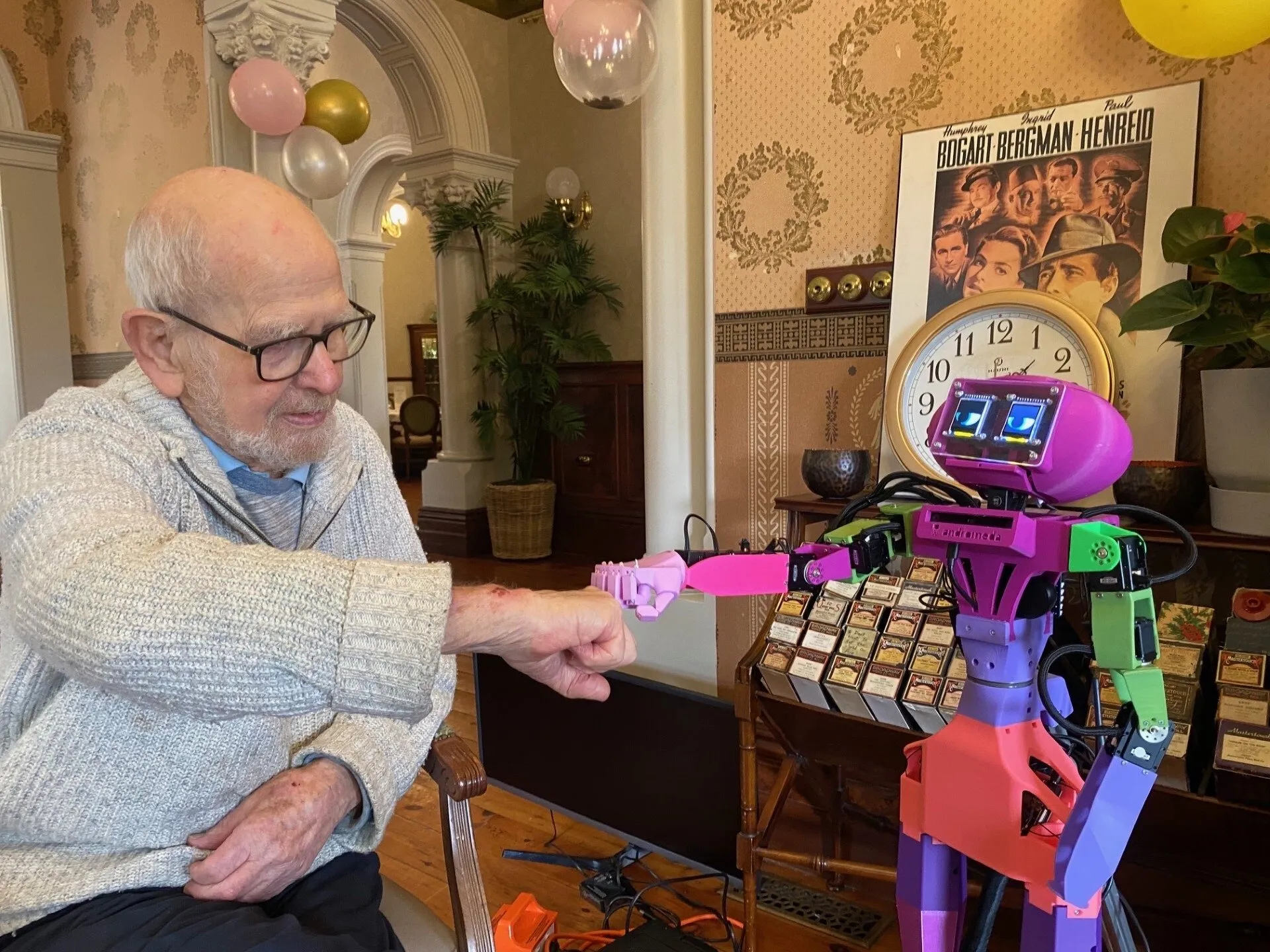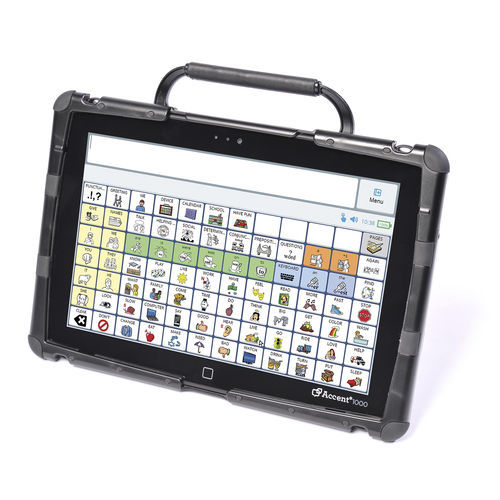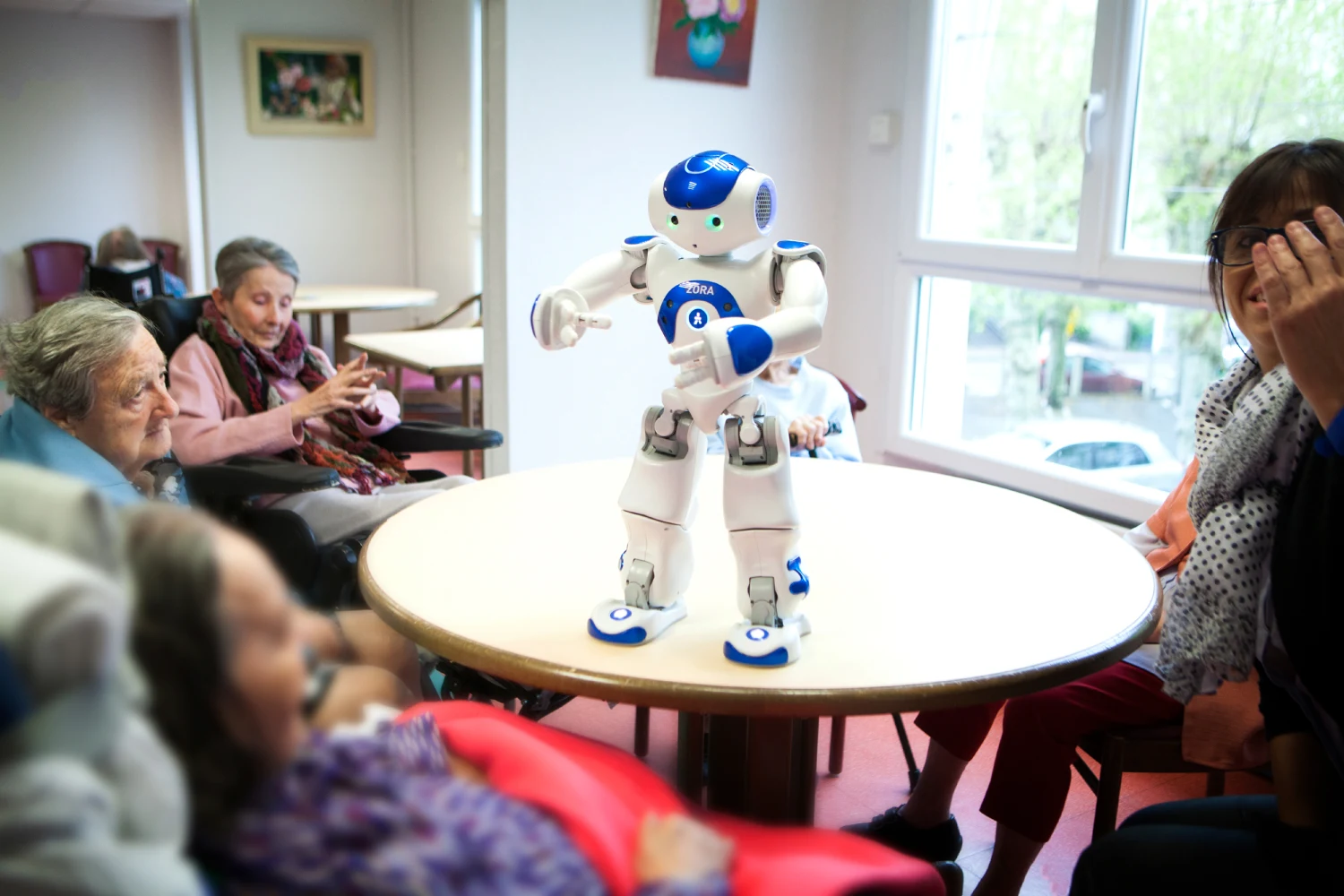.webp)
The Intersection of Care and Technology: Transforming Aged Care in Australia
The Aged Care industry is at a crucial crossroad in an increasingly digitised world. The intersection of technology and care presents an unprecedented opportunity to transform how we provide support and, most importantly, improve the lives of older Australians. This article explores the challenges and potential solutions for integrating technology into the aged care system. By embracing digital transformation, we can revolutionise the industry, enhance the quality of care, and foster a more connected and respectful environment.
The Aged Care System Speaks: Demands and Inhibitions of Technology Transformation:
The aged care system is both a catalyst and a barrier to technology transformation. On the one hand, technological advancements offer immense possibilities for enhanced caregiving, personalised services, and improved efficiency. On the other hand, the system must overcome various challenges, such as limited resources, resistance to change, and regulatory hurdles. To truly unlock the potential of technology in aged care, we must address these demands and inhibitions head-on.
Sustained Innovation Drives Possibility: Exploring New Technologies in Aged Care:
Within the Aged Care landscape, sustained innovation is becoming the beacon illuminating the path toward enhanced care and improving outcomes for older people. The technological advancements of the modern era have ushered in a new era of possibilities, including the potential to improve the efficiency of care delivery. The walls of a facility no longer constrain aged care; it has been liberated by a wave of cutting-edge technologies that empower caregivers, engage patients, and transform the very essence of care delivery. Below are examples of technology that is innovating the Aged Care industry:
Remote Monitoring Technologies
Integrating remote monitoring technologies has redefined the boundaries of care, extending its reach far beyond the confines of traditional care settings. With the capability to transmit vital health data to healthcare providers regardless of the patient's physical location, remote monitoring technologies facilitate the provision of seamless, continuous care. This virtual tether to healthcare professionals empowers seniors to age with greater independence and peace of mind while simultaneously enabling caregivers to deliver personalised, responsive care tailored to each individual's needs.

Examples of sensors and monitoring technologies in Aged Care:
Care at Home Bed Sensor: A sensor that can fit into any bed, monitor movements, and detect a fall out of bed.
REMi:A monitoring system with sensors fitted into a mattress cover that can monitor movement and vital signs such as heart rate.
Smarter Safer Homes: A sensor developed by the CSIRO to support older people living independently at home. Family members and care workers can access the sensors remotely to support independence.
Assistive Technologies
Integrating assistive technologies has revolutionised the landscape of aged care, offering myriad solutions to enhance the quality of life for the elderly. Smart home devices, equipped with voice-activated assistants and ambient sensors, provide unobtrusive support, enabling seniors to navigate their daily routines with greater ease and autonomy. These technologies promote independence and serve as a safety net, detecting anomalies in activity patterns and alerting caregivers to potential risks, such as falls or prolonged periods of inactivity.

Some examples of assistive technologies in Australia include:
Accent 1400: A communication-speech generating device that can support older adults in communicating using the mouse, head-tracking, or eye gaze.
Telstra Visual signal alert: A device that provides a visual signal allowing a deaf user to see that the telephone is ringing.
Talking Watch: A battery-operated talking watch with large numbers/characters that may be suitable for individuals with visual impairment. The watch's voice output reports the time and can be activated by pressing a button.
Digital Platforms
The integration of digital platforms has been instrumental in driving innovation within the aged care industry, and their continued use is poised to reshape the care delivery landscape. These platforms offer an array of capabilities that streamline operations and significantly benefit the aged care system, improving residents' overall quality of care and enhancing organisational efficiency. Two notable examples of these digital platforms are the Government Provider Management System and the ELDAC Dashboard:

Government Provider Management System:
This centralised digital solution aims to streamline the management and administration of aged care services in Australia.
Capabilities include efficient communication and data exchange with government agencies, leading to improved operational efficiency, enhanced regulatory compliance, and better decision-making processes.
The platform's integration with Business to Government (B2G) systems streamlines the submission of required documentation, reducing manual data entry and minimising errors.
The Government aims to fully integrate this system across different regions and provider types by 2025, reflecting a commitment to standardisation and improved management of aged care services nationwide.

ELDAC Dashboard:
Developed by the Australian Government, this user-friendly platform is a resource hub for aged care providers delivering palliative care services.
It offers access to evidence-based guidelines, educational materials, and practical tools tailored to the specific needs of each aged care facility, supporting the delivery of compassionate and dignified palliative care.
The ELDAC Dashboard ensures that residents receive consistent and appropriate care by equipping healthcare professionals with resources and information on symptom management, advance care planning, and communication strategies during end-of-life care.
Its implementation across aged care facilities is set to address the growing demand for standardised, high-quality palliative care services.
The fusion of these technologies empowers caregivers with real-time insights and actionable data and fosters greater independence, safety, and well-being for older people. As the Aged Care industry continues to embrace these innovations, it is poised to create a future where personalised, connected, and proactive care becomes the hallmark of care delivery for older people.
Robotics
Robotics is rapidly changing the landscape of the aged care sector, positioning itself as a critical driver in innovating care delivery. Care robots are revolutionising the way elderly individuals receive care by offering assistance in various tasks, ultimately enhancing their quality of life while also easing the burden on caregivers. The capabilities of these robots make them indispensable in aged care settings.

Physical Assistance: Care robots excel in providing physical support, aiding residents in mobility, transfers, and daily activities like dressing and grooming. An excellent example of this capability is demonstrated by Abi, developed by the Medical and Aged Care Group. Abi offers assistance with mobility and daily activities, enhancing the independence and dignity of aged care residents.
Safety Monitoring: With cutting-edge sensors and monitoring systems, care robots can detect falls, monitor vital signs, and alert caregivers in emergencies. This capability ensures proactive monitoring, helping prevent accidents and ensuring timely interventions. Care robots such as PARO, a robopet designed to stimulate interaction and engagement, also possess safety monitoring features to ensure the well-being of elderly residents, particularly those with dementia.
Companionship and Emotional Support: Care robots offer residents companionship and emotional support through engaging in conversations, playing games, and providing therapeutic interactions. An exceptional example of this capability is Zora, a software solution that helps nurses and aged care workers support older people. Zora facilitates engaging and meaningful interactions, helping combat feelings of loneliness and isolation often experienced by elderly individuals.

The increasing integration of robotic technologies in aged care facilities across Australia underscores the industry's recognition of the potential of these innovations. With workforce shortages and the demand for high-quality care rising, the adoption of care robots is expected to escalate in the coming years. By embracing care robots, aged care facilities can enhance care quality, address staffing challenges, and improve operational efficiency, paving the way for a future where human and robot caregivers work together to deliver exceptional and personalized care to residents.
Strategic Provocations: Directions for Purposeful Digital Transformation
As the aged care sector continues to witness the integration of new innovative technologies, pursuing meaningful digital transformation becomes increasingly essential for facilities that deliver high-quality, person-centred care. Embracing provocative strategies ensures that implementing these technologies translates into tangible improvements in care delivery, outcomes, and overall resident well-being. These strategies drive innovation and efficiency and enable facilities to adapt to the evolving needs and expectations of older Australians in a rapidly changing healthcare landscape.
Collaborative Ecosystems: By establishing collaborative ecosystems that bring together industry stakeholders and tech innovators, facilities can foster innovation and co-creation opportunities, aligning solutions with the evolving needs of aged care. These partnerships not only share the burden of digital transformation but also amplify the benefits, such as improved care delivery and outcomes. For example, forming partnerships with universities or technology companies can cultivate an environment conducive to knowledge sharing and cross-functional collaboration, driving meaningful digital transformation in care delivery.
Embracing Telehealth: Integrating telehealth services is a game-changer for aged care facilities. It enables them to provide remote consultations and monitoring, thereby significantly improving access to care for seniors. This not only enhances the quality and accessibility of care but also reduces healthcare costs. Implementing telehealth policies, training healthcare providers, and ensuring reliable internet connectivity are crucial steps in leveraging this strategy effectively. For instance, partnering with telehealth service providers and equipping staff with the necessary training can enhance the quality and accessibility of care for older Australians.
Data-driven Decision-making: Harnessing data analytics empowers facilities to make evidence-based decisions, optimise resources, and enhance care outcomes through continuous quality improvement. Implementing data governance policies, investing in analytics tools, and upskilling staff in interpretation are critical components of this strategy. For example, adopting electronic health record systems and providing data analysis training for staff can drive operational efficiency and quality improvements in aged care services.
Upskilling Workforce: Investing in training programs to enhance the digital skills of aged care professionals can elevate competencies, boost job satisfaction, and improve care outcomes for older Australians. Providing digital literacy training, developing adaptable learning programs, and encouraging ongoing upskilling are fundamental in preparing the workforce for technology-driven care environments. For instance, offering online modules and workshops tailored to different skill levels can empower staff to navigate digital tools effectively, contributing to the overall success of digital transformation in aged care facilities.
Person-Centred Care: Integrating person-centred care models within Aged Care facilities that prioritise and celebrate human interactions and autonomy. Leveraging technology as an enabler to complement, rather than replace, human connections. By doing this, facilities can promote dignity, individuality, and respect in care practices. For example, incorporating virtual reality experiences or other interactive technologies can enhance personalisation while maintaining the essential human touch.
User-Centric Design: Developing technology solutions that prioritise older Australians' needs and preferences. This is not just about making technology accessible, but about creating a user-centric environment that fosters inclusivity, engagement, and accessibility for individuals with varying levels of digital literacy. Doing this can enhance the overall care experience and strengthen connections with residents. Simplified health monitoring apps and communication platforms can be seen as some successful examples.
Regulatory Framework: Embracing a robust regulatory framework within facilities that ensures privacy, security, and ethical practices in technology implementation. By doing so, facilities can safeguard the rights and data of older Australians while promoting trust and transparency. Look to regulatory bodies such as the Aged Care Quality and Safety Commission as a guiding example.
Conclusion
In conclusion, integrating technology in the aged care industry represents a pivotal moment, offering immense potential to revolutionise the care delivery landscape and positively impact the lives of older Australians. While the aged care system stands at the intersection of demands and inhibitions of technology transformation, sustained innovation is illuminating the path towards enhanced care. By adopting these innovative technologies discussed, the industry can push the boundaries of traditional care delivery, empowering caregivers, engaging patients, and fostering a personalised and connected future.
Moreover, the strategic provocations discussed above can act as guiding principles for purposeful digital transformation in aged care facilities. By embracing these strategies, facilities can ensure that the implementation of technologies translates into tangible improvements in care delivery, outcomes, and overall resident well-being. The proactive integration of innovative technologies combined with these strategic directions positions the aged care industry to navigate the challenges and opportunities of the digital era, ensuring a future where high-quality, person-centred care becomes the standard in aged care facilities across Australia.
Ready to revolutionise your aged care facility with cutting-edge technology and top-tier talent?
Visit our Aged Care page to explore our comprehensive Aged Care services or contact us today to discover how we can assist with your hiring needs. Let’s work together to enhance the quality of care and create a brighter future for older Australians.
